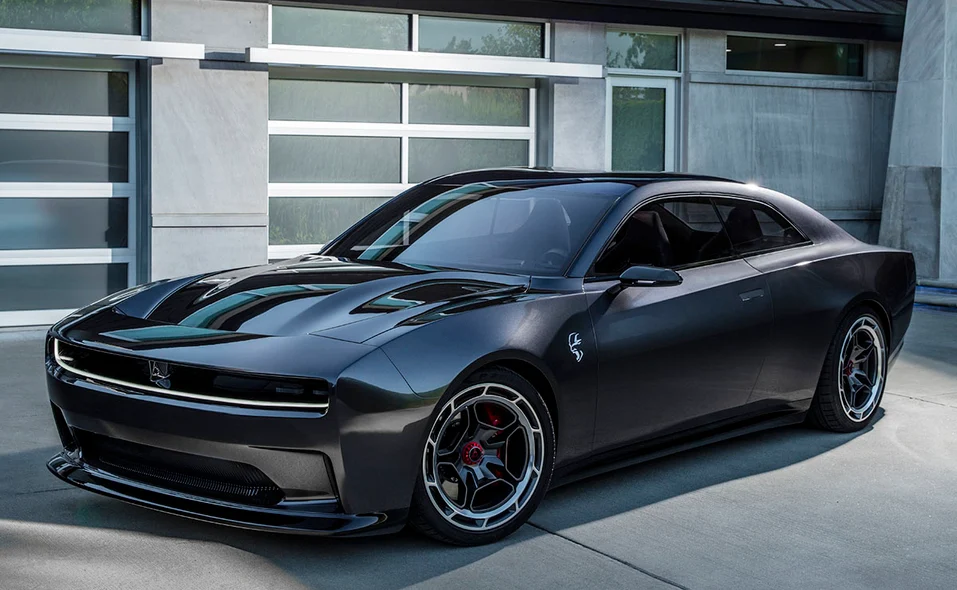In August, Dodge CEO Tim Kuniskis announced plans to discontinue two of the company’s iconic muscle cars – the Challenger and Charger. These two cars have been staples in the performance market since the 1950s, and their discontinuation marks the end of an era. In their place, the new electric Charger Daytona SRT is slated to enter the market in 2024. Named after the 1969 model – the first NASCAR vehicle to reach 200 miles per hour – the Charger Daytona SRT will be the world’s first all-electric muscle car, and promises to set a precedent for any electric performance-aimed models.
Scott Krugger, Head of Dodge Design at Stellantis, describes the reasoning for a shift toward electric vehicles.
“The simple things we know about why everyone is going electric is just to be more green and reduce greenhouse gasses,” he said. “The reason for Dodge going electric is really due to the fact that we can get a much more powerful vehicle and take advantage of the fact that electric brings that type of technology that we can’t get with the internal combustion engine. We have this phrase ‘Performance made us do it,’ and that’s how we handle the concept for that very reason.”
Dodge is hardly the first auto brand to begin experimenting with electric vehicles. Hybrid models of the Chevrolet Equinox and Blazer will enter the market in 2023 and the Delorean Alpha 5 will make its debut in late 2024. Cadillac, Honda, and Jeep are all following this trend, not to mention Tesla, which has been a dominant producer in the electric car market since 2008. As automobile companies begin to transition to all-electric or hybrid-powered vehicles, it begs the question: What does the future look like for electric vehicles?
Recent legislation in the states of California and New York may offer a vision of that future. In August of 2022, California unveiled its plan to ban the sale of all gas-powered automobiles by 2035 in an effort to fight climate change. New York announced in early October that it plans to implement a similar ban.
Royal Oak High School AP Microeconomics teacher, Colin Campbell, predicts a shift toward electric vehicles and ultimately higher prices.
“I do think that we will see an increase in the price of those vehicles,” he said. “But at the same time, I think we will see a production shift to produce more electric. I think companies previous to this are seeing the writing on the wall with the federal government providing many subsidies to incentivize electric production.”
As government subsidies continue to make electric car production cheaper and the California gas ban foreshadows an increase in electric car prices in the state, a new question arises. Are electric cars more beneficial to the producer or the consumer?
“It’s all about how you make a better product,” said Krugger. “How do you make a better Dodge? How do we use this technology that is at a point where we can implement it to make a better product for ourselves? In turn, the customer will appreciate that.”
Nevertheless, the shift to electric automobiles will prove to be a drastic change for the auto industry.
“There’s the phrase that ‘We went from the horse to the horse-drawn carriage to the car,’” Krugger said. “The car engine has taken many different shapes. When we look at the history of mobility, the fact that we’re going electric is really one of those transition points in our history as an automotive company, and for automobiles in general.”






























